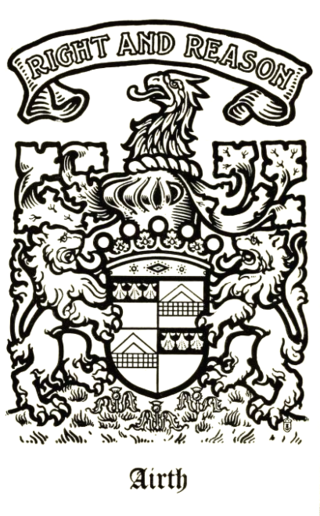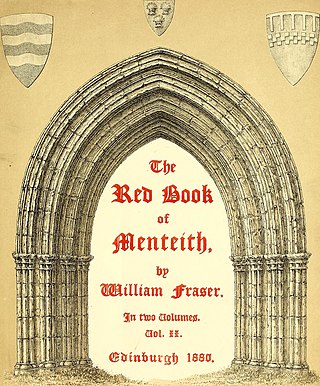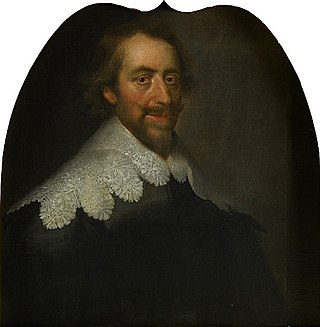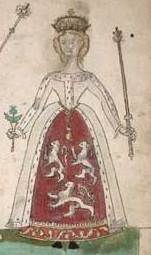Related Research Articles

James I was King of Scots from 1406 until his assassination in 1437. The youngest of three sons, he was born in Dunfermline Abbey to King Robert III and Annabella Drummond. His older brother David, Duke of Rothesay, died under suspicious circumstances during detention by their uncle, Robert, Duke of Albany. James' other brother, Robert, died young. Fears surrounding James's safety grew through the winter of 1405/06 and plans were made to send him to France. In February 1406, James was forced to take refuge in the castle of the Bass Rock in the Firth of Forth after his escort was attacked by supporters of Archibald, 4th Earl of Douglas. He remained at the castle until mid-March, when he boarded a vessel bound for France. On 22 March, English pirates captured the ship and delivered the prince to Henry IV of England. The ailing Robert III died on 4 April and the 11-year-old James, now the uncrowned King of Scots, would not regain his freedom for another eighteen years.

Earl of Caithness is a title that has been created several times in the Peerage of Scotland, and it has a very complex history. Its first grant, in the modern sense as to have been counted in strict lists of peerages, is now generally held to have taken place in favor of Maol Íosa V, Earl of Strathearn, in 1334, although in the true circumstances of 14th century, this presumably was just a recognition of his hereditary right to the ancient earldom/mormaership of Caithness. The next year, however, all of his titles were declared forfeit for treason.

Earl of Airth was a title in the Peerage of Scotland, created on 21 January 1633 by Charles I, for William Graham, 7th Earl of Menteith. It became extinct on the death of his grandson in 1694.

The Mormaer or Earl of Atholl was the title of the holder of a medieval comital lordship straddling the highland province of Atholl, now in northern Perthshire. Atholl is a special Mormaerdom, because a King of Atholl is reported from the Pictish period. The only other two Pictish kingdoms to be known from contemporary sources are Fortriu and Circinn. Indeed, the early 13th century document known to modern scholars as the de Situ Albanie repeats the claim that Atholl was an ancient Pictish kingdom. In the 11th century, the famous Crínán of Dunkeld may have performed the role of Mormaer.

The Mormaer or Earl of Menteith was the ruler of the province of Menteith in the Middle Ages. The first mormaer is usually regarded as Gille Críst, simply because he is the earliest on record. The title was held in a continuous line from Gille Críst until Muireadhach IV, although the male line was broken on two occasions. A truncated version of the earldom was given two years later to Malise Graham, 1st Earl of Menteith, in compensation for loss of the Earldom of Strathearn.

Earl or Mormaer of Strathearn is a title of Scottish nobility, referring to the region of Strathearn in southern Perthshire. Of unknown origin, the mormaers are attested for the first time in a document perhaps dating to 1115. The first known mormaer, Malise I, is mentioned by Ailred of Rievaulx as leading native Scots in the company of King David at the Battle of the Standard, 1138. The last ruler of the Strathearn line was Malise, also Earl of Caithness and Orkney, who had his earldom forfeited by King Edward Balliol. In 1344 it was regranted by King David to Maurice de Moravia, a royal favourite who had a vague claim to the earldom as Malise's nephew and also stepfather.

William Graham, 7th Earl of Menteith, 1st Earl of Airth, was a 17th-century Scottish nobleman. A supporter of King Charles I, he held offices including Lord President of the Court of Session and was a Privy Counsellor. Although he fell from favour, he continued to support the Royal cause during the Wars of the Three Kingdoms, when his estates were damaged by the troops of Oliver Cromwell. He married Agnes, daughter of Patrick, Lord Gray, and had a son John Graham, Lord of Kinpont, who had a son William Graham, 8th Earl of Menteith who prior to his death was styled William Graham, Lord of Kinpont.
Máel Ísu or Malise II is the fifth known mormaer, or earl, of the Scottish region of Strathearn. He was the son of Robert, 4th Earl of Strathearn.
Malise III of Strathearn was a Scottish nobleman, the ruler of the region of Strathearn.

Malise IV of Strathearn was a Scottish nobleman, the seventh known ruler of Strathearn. He was an ardent supporter of King Robert the Bruce, in contrast to his father, Malise III, who sided with Edward I of England.
Hugh [probably Gaelic: Aodh], was the third successor of Ferchar mac in tSagairt as Mormaer of Ross (1323–1333).

Clan Murray is a Highland Scottish clan. The chief of the Clan Murray holds the title of Duke of Atholl. Their ancestors were the Morays of Bothwell who established the family in Scotland in the 12th century. In the 16th century, descendants of the Morays of Bothwell, the Murrays of Tullibardine, secured the chiefship of the clan and were created Earls of Tullibardine in 1606. The first Earl of Tullibardine married the heiress to the Stewart earldom of Atholl and Atholl therefore became a Murray earldom in 1626. The Murray Earl of Atholl was created Marquess of Atholl in 1676 and in 1703 it became a dukedom. The marquess of Tullibardine title has continued as a subsidiary title, being bestowed on elder sons of the chief until they succeed him as Duke of Atholl.

Walter Stewart, Earl of Atholl, Strathearn and Caithness was a Scottish nobleman, the son of Robert II of Scotland. Stewart advocated for the ransom and return to Scotland of the future king in exile, James I, in 1424. In 1425 he served as a member of the jury of 21 which tried and executed his nephew Murdoch Stewart, 2nd Duke of Albany. Eventually, however, Atholl turned against the King and conspired in his assassination in 1437. He was tried for murder and was executed after three days of torture.

Euphemia de Ross (1329–1386), a member of Clan Ross, was Queen of Scots as the second wife of Robert II of Scotland.
Maurice de Moravia, Earl of Strathearn (1276–1346), also known as Maurice Moray or Murray, was a Scottish nobleman.
John Campbell, Earl of Atholl was a Scottish nobleman.
Euphemia Stewart, Countess of Strathearn was a medieval Scottish noblewoman, the daughter of David Stewart, Earl Palatine of Strathearn and Caithness. She succeeded to both her father's titles after his death between 1385 and 1389, probably March 1386.
Malise Graham, 1st Earl of Menteith was a 15th-century Scottish magnate, who was the heir to the Scottish throne between 1437 and 1451, if Elizabeth Mure's children were not counted as lawful heirs.
Mary II, Countess of Menteith was a Scottish noblewoman. Her father was Alan II, Earl of Menteith, who died c. 1330. She is believed to have agreed with her kinsman Muireadhach III, in 1330, that he should hold the Earldom, but when he was killed in August 1332, Mary assumed the title. She married Sir John Graham, who in her right became Earl of Monteith and assumed the title in May 1346. She died sometime prior to 29 April 1360. She was the mother of Margaret Graham, Countess of Menteith.

Sir John Menteith of Ruskie and Knapdale was a Scottish nobleman during the Wars of Scottish Independence. He is known for his capture of Sir William Wallace in 1305 and later joined with King Robert I of Scotland and received large land grants in Knapdale and Kintyre for his service. He is described as "guardian" of the Earldom of Menteith, as his great-nephew Alan II, Earl of Menteith was a minor at the time of the death of Alan I, Earl of Menteith.
References
- ↑ McGladdery, Christine (2001). "The House of Stewart, 1371–1625". In Oram, Richard (ed.). The Kings & Queens of Scotland. Stroud, Gloucestershire: Tempus Publishing Ltd. ISBN 0-7524-1991-9.
- ↑ McAndrew, Bruce A.. Scotland's Historic Heraldry. United Kingdom, Boydell Press, 2006. p.219.
- 1 2 3 4 5 Brown, M. H. (2004). "Graham, Sir Robert, of Kinpont (d. 1437)" . Oxford Dictionary of National Biography (online ed.). Oxford University Press. doi:10.1093/ref:odnb/11218 . Retrieved 4 June 2012.(Subscription or UK public library membership required.)
- 1 2 3 4 5 Nicholas, Harris (1842). History of the Earldoms of Strathern, Monteith, and Airth. London: William Pickering. p. 20.
- ↑ Brown, M. H. (1996), "'I have thus slain a tyrant' - The Dethe of the Kynge of Scotis and the right to resist in early fifteenth-century Scotland", Innes Review, Glasgow: J.S. Burns & Sons, 47 (SPRING 1996): 24–44, doi:10.3366/inr.1996.47.1.24, ISSN 0020-157X.
- 1 2 Campbell, Alastair (2000). A History of Clan Campbell Volume 1. Edinburgh University Press. pp. 120–121. ISBN 9781902930176.
- ↑ Nicholas, Harris (18 March 2024). History of the Earldoms of Strathern, Monteith, and Airth. p. 47.
- ↑ Brown, M. H. (2004). "Graham, Malise, third earl of Strathearn and first earl of Menteith (1406x13–1490)" . Oxford Dictionary of National Biography (online ed.). Oxford University Press. doi:10.1093/ref:odnb/54217 . Retrieved 4 June 2012.(Subscription or UK public library membership required.)